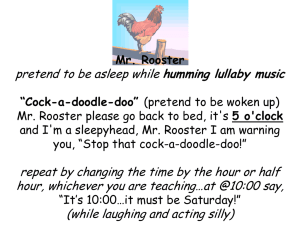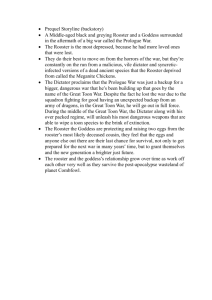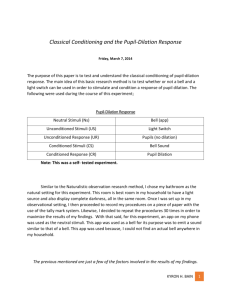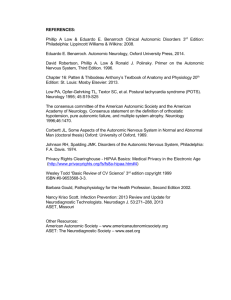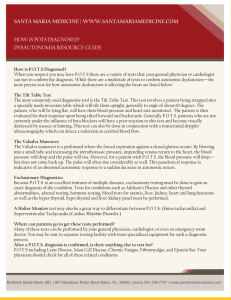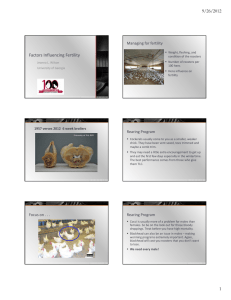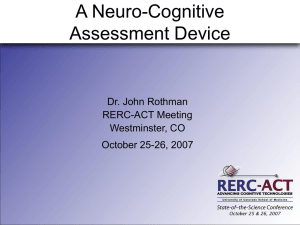Classical Conditioning in the Real World
advertisement
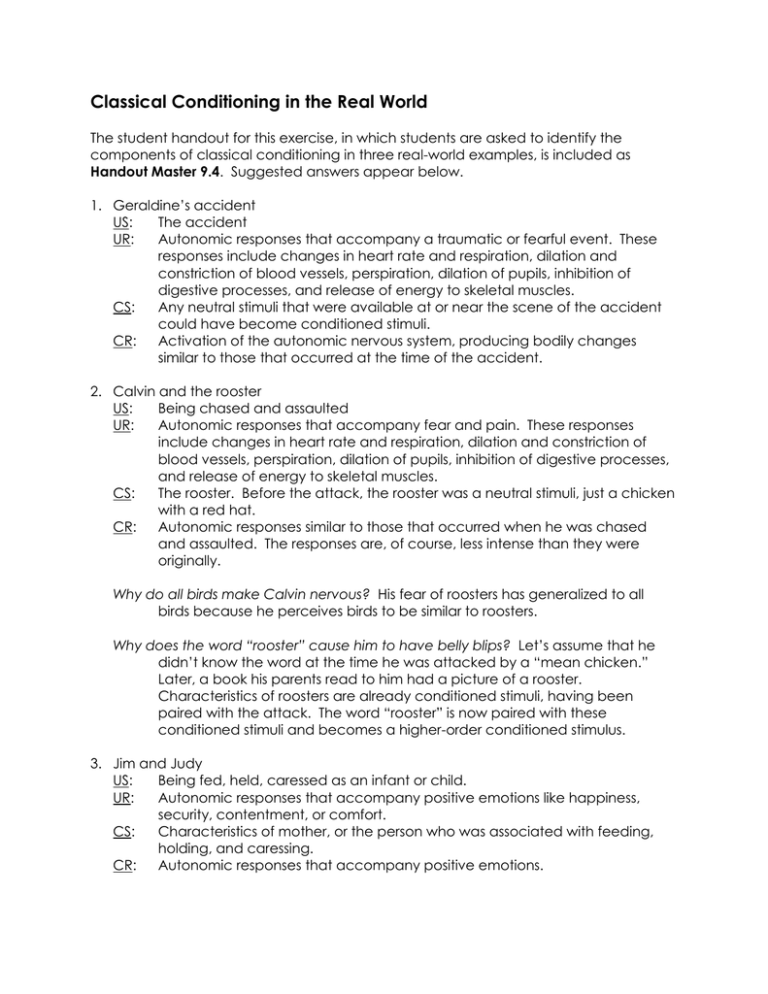
Classical Conditioning in the Real World The student handout for this exercise, in which students are asked to identify the components of classical conditioning in three real-world examples, is included as Handout Master 9.4. Suggested answers appear below. 1. Geraldine’s accident US: The accident UR: Autonomic responses that accompany a traumatic or fearful event. These responses include changes in heart rate and respiration, dilation and constriction of blood vessels, perspiration, dilation of pupils, inhibition of digestive processes, and release of energy to skeletal muscles. CS: Any neutral stimuli that were available at or near the scene of the accident could have become conditioned stimuli. CR: Activation of the autonomic nervous system, producing bodily changes similar to those that occurred at the time of the accident. 2. Calvin and the rooster US: Being chased and assaulted UR: Autonomic responses that accompany fear and pain. These responses include changes in heart rate and respiration, dilation and constriction of blood vessels, perspiration, dilation of pupils, inhibition of digestive processes, and release of energy to skeletal muscles. CS: The rooster. Before the attack, the rooster was a neutral stimuli, just a chicken with a red hat. CR: Autonomic responses similar to those that occurred when he was chased and assaulted. The responses are, of course, less intense than they were originally. Why do all birds make Calvin nervous? His fear of roosters has generalized to all birds because he perceives birds to be similar to roosters. Why does the word “rooster” cause him to have belly blips? Let’s assume that he didn’t know the word at the time he was attacked by a “mean chicken.” Later, a book his parents read to him had a picture of a rooster. Characteristics of roosters are already conditioned stimuli, having been paired with the attack. The word “rooster” is now paired with these conditioned stimuli and becomes a higher-order conditioned stimulus. 3. Jim and Judy US: Being fed, held, caressed as an infant or child. UR: Autonomic responses that accompany positive emotions like happiness, security, contentment, or comfort. CS: Characteristics of mother, or the person who was associated with feeding, holding, and caressing. CR: Autonomic responses that accompany positive emotions.
